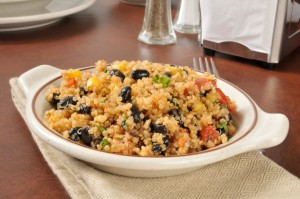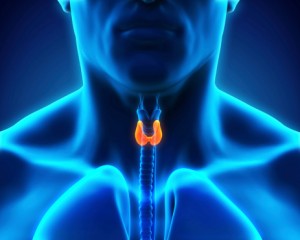Where Did All the Pears Go? How Your Body Shape Determines Your Metabolic Destiny
A recent study in the Journal of the American Society of Nephrology showed that among other health problems, apple shapes have a greater risk of kidney disease.
"We found that apple-shaped persons -- even if totally healthy and with a normal blood pressure -- have an elevated blood pressure in their kidneys," said researcher Dr. Arjan Kwakernaak. "When they are also overweight or obese, this is even worse."
The study caught my attention because it shows once again obesity's wide-range damage, but also because the terms "apple" and "pear" have fallen out of favor. Today we're more prone to say someone has a "potbelly," "beer belly, or "gut." I don't hear too many fruit-shaped descriptions for overweight people.
Once upon a time, however, we had both shapes wandering about. If you're not familiar, apple-shaped people store fat above their waist with skinny legs and visceral fat that surrounds their internal organs, inflicting serious metabolic havoc.
Pear-shaped folks, on the other hand, have what's called subcutaneous fat directly under their skin that typically hangs out on their hips, thighs, and butt. In other words, pears store this less-harmful fat below their waist -- think J-Lo or Kim Kardashian as modernday pear shapes.
Over the years, I've noticed pear shapes have largely disappeared. A 2007 study in the journal Obesity (Silver Springs) showed that among middle-aged Americans, 50 percent of men and 70 percent of women now exceed the waist circumference threshold for abdominal obesity. In other words, the majority of them fall into the apple category.
I'm seeing a lot more apples these days, and the repercussions aren't pretty. I don't just mean aesthetically, even if an ever-expanding midsection isn't exactly a pleasant picture.
The Journal of the American Society of Nephrology study mentioned inflammation and insulin resistance as key culprits for increased kidney disease. Actually, they contribute to pretty much every problem with apple-shaped people.
Take insulin resistance. A 1999 study in the Journal of Clinical Endocrinology and Metabolism found apple shapes more prone to insulin resistance, setting the stage for diabetes. Another study that looked at Asian Indians in the journal Diabetes Care also showed visceral fat increases your diabetes risk.
Insulin resistance is a key component of metabolic syndrome, a nasty cluster of issues that also includes high blood pressure and increased cardiovascular issues. Apple-shaped folks are more prone to these issues as well as Alzheimer's and several cancers.
Chronic inflammation also contributes to about every disease on the planet. Being overweight exacerbates that problem, since fat cells are highly inflammatory.
Fortunately, no one is doomed to remain apple-shaped. These seven strategies help balance your blood sugar and optimize fat-burning hormones to make you lean, muscular, and healthy:
1. Start every morning with a protein shake. Breakfast is my favorite meal (said no one ever). Morning franticness means you're likely to grab a low-fat muffin (an "adult cupcake") with your grande dark roast as you race to your office. A sugary breakfast will crash your blood sugar and send you racing for a late-morning pick me up. Opt instead for a quick, delicious protein shake. One study in The American Journal of Clinical Nutrition showed a high-protein breakfast curbed hunger far better than carbohydrate-heavy "diet" cereals and low-fat muffins. Load plant-based (but not soy) protein powder with frozen berries, kale, chia or flax seeds, and unsweetened coconut or almond milk for a fast, filling meal that keeps you focused for hours.
2. Make your meals the right combo. A big bowl of pasta is a glycemic nightmare that puts you on a metabolic roller coaster that crashes with cravings, hunger, and storing fat. Focus instead on lean protein, healthy fats, loads of leafy greens, and slow-release high-fiber carbs that balance your blood sugar and keep you full for hours.
3. Address food intolerances. Highly-reactive foods create inflammation and numerous symptoms as well as stall fat loss. One recent study in The Journal of Nutrition Biochemistry found a gluten-free diet helps reduce inflammation and insulin resistance so you burn fat faster. Try an elimination diet and remove gluten, soy, dairy, and other highly reactive foods for three weeks. You're likely to notice a big difference on the scales and with your skinny jeans.
4. Drink up. Optimal hydration keeps your metabolic machinery running smoothly. While your body is about 70 percent water, dehydration can drop it to 40 or 50 percent. Keep a canteen and sip throughout your day, beginning with 16 ounces upon waking and ending with a glass of water before bed. The only time I don't want you drinking is during meals, when too much liquid can dilute your stomach enzymes that break down protein. Otherwise, drink away! If you're not overly fond of water, keep spa water in your fridge with orange, lemon, or cucumber slices.
5. Get seven to nine hours of sleep every night. Besides making your morning miserable, sleep deprivation knocks your fat-burning and other hormones completely out of whack. Everything -- and typically, everyone around you -- suffers. A study in the Journal of Applied Physiology found sleep deprivation contributes to insulin resistance, weight gain, and eventually diabetes. Aim for at least seven hours of high quality, uninterrupted sleep every night. Power down the hour before bed by turning off electronics, taking a hot bath with some chamomile tea, and unwinding with deep breathing or meditation.
6. Chill out! Stress makes you fat in more ways than you might imagine. Sure, a high-intensity blowout with your partner might lead you to the double-fudge brownies, but stress also raises cortisol, which does two things really well: this hormone breaks down muscle and stores fat. A study in the journal Obesity (Silver Springs) found something you probably know too well: Stressful life events raise cortisol and trigger stress eating, leading to fat gain. Stress management is not a luxury, so take some me time with a massage, lunch with your bestie, or maybe just a walk around the block with your dog.
7. Burst to blast fat. Could too much gym time be making you fat? I know it sounds crazy, but over-exercising or doing the wrong kind of exercise could raise cortisol and become counter-productive. Skip the elliptical machines and aerobics classes (those went out with legwarmers!) for burst training, which involves high-intensity 30-60 second blasts of exercise intermittently with one- to two-minute rest periods. A study in the Journal of Obesity showed that burst training's benefits included reduced insulin resistance, increased glucose tolerance, and enhanced fat metabolism. You don't need special equipment to do burst training. A hill or even the mall or hotel staircase makes a perfect place to blast fat.
References
Anjana M, et al. Visceral and central abdominal fat and anthropometry in relation to diabetes in Asian Indians. Diabetes Care. 2004 Dec;27(12):2948-53.
Blom WA, et al. Effect of a high-protein breakfast on the postprandial ghrelin response. Am J Clin Nutr. 2006 Feb;83(2):211-20.
Boutcher SH. High-intensity intermittent exercise and fat loss. J Obes. 2011;2011:868305. doi: 10.1155/2011/868305. Epub 2010 Nov 24.
Kwakernaak AJ, et al. Central Body Fat Distribution Associates with Unfavorable Renal Hemodynamics Independent of Body Mass Index. Journal of the American Society of Nephrology, 2013; DOI: 10.
Li C, et al. Increasing trends in waist circumference and abdominal obesity among US adults. Obesity (Silver Spring). 2007 Jan;15(1):216-24.
Roberts C, et al. The effects of stress on body weight: biological and psychological predictors of change in BMI. Obesity (Silver Spring). 2007 Dec;15(12):3045-55. doi: 10.1038/oby.2007.363.
Soares FL, et al. Gluten-free diet reduces adiposity, inflammation and insulin resistance associated with the induction of PPAR-alpha and PPAR-gamma expression. J Nutr Biochem. 2013 Jun;24(6):1105-11. doi: 10.1016/j.jnutbio.2012.08.009. Epub 2012 Dec 17.
Spiegel K, et al. Sleep loss: a novel risk factor for insulin resistance and Type 2 diabetes. J Appl Physiol. 2005 Nov;99(5):2008-19.
http://wupa.wustl.edu/record_archive/1999/03-25-99/articles/insulin.html
For more by JJ Virgin, click here.
For more on personal health, click here.
-
Exercise Clothing: The secret to success!
When you first start exercising finding the right clothes to wear
-
How to Lose 10 Pounds Quickly?
How to lose 10 pounds? You have probably asked yourself this before. I
-
Lose Weight And Save Money
Many of us have the same reasons for wanting to exercise and lose weig
-
Fat Loss Tip Of The Year
If you stopped me on the street to ask me what my number one fat lo
-
Why Snacking Can Stall Fat Loss and Fast Metabolism
Discuss snacking among fitness and nutrition experts and youll
-
Do You Really Mean It? How Can I Lose My Belly Fat?
This question gets ask by thousands of people every day, How can I los
- DON'T MISS
- Getting Through The Holidays Without Gaining Weight
- How To Avoid Obesity And Its Complications
- How To Love Your Body Better
- Top Weight Loss Plans: Diet vs. Exercise
- Lose Weight By Addressing Insulin Resistance
- Weight Loss And Exercise - Why Its Important
- Trying to Lose Weight? You Need to Eat
- Ease You Pain! What To Do About Hemorrhoids.
- How To Lose Weight Gradually Through Walking
- Conjugated Linoleic Acid (CLA)




